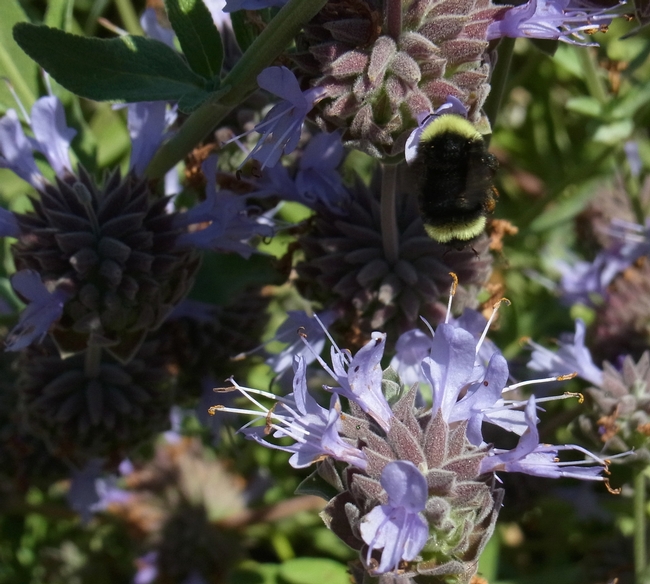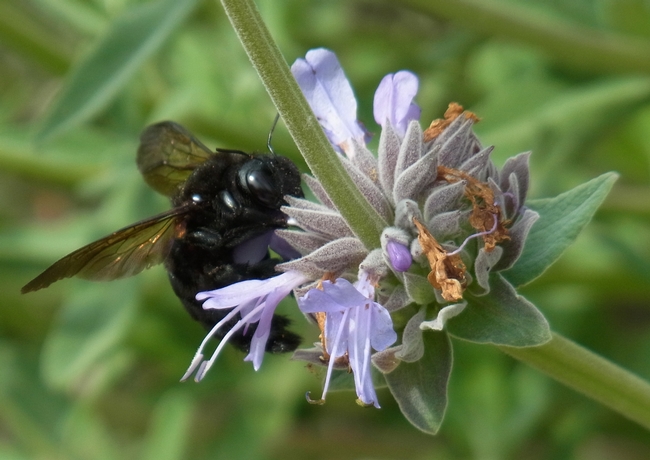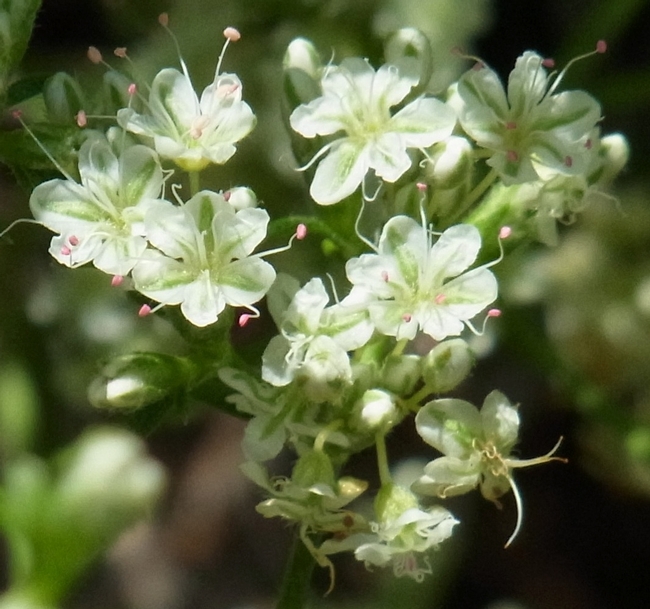How is the California drought affecting bees? Many Haven visitors have asked that question. Drought affects bees in several ways; the good news is that we can provide some relief in our bee gardens. Some considerations:
Water
Honey bees need water to cool the hive and to dilute the honey they feed to developing bees. This is why it's essential to include a water source in your bee garden. See this previous Bee Gardener post for more information.
Parasites
The honey bee-parasitic varroa mite, Varroa destructor, has had a devastating effect on honey bee health. The good news is that multi-year droughts can reduce the mite's reproductive rate (Environ. Entomol. (2003) 32(6): 1305-1312).
Floral resources
Drought-stressed plants produce fewer, shorter-lasting flowers. Lack of adequate, high-quality forage has been identified in a USDA study as a major factor in bee health decline.
Less obvious than the absence of flowers is the quality of the food they provide. In a study of squash plants subjected to simulated drought, it was determined that the daily pattern of nectar secretion was unaffected by drought. The volume and concentration of nectar declined with the length of the simulated drought, however, indicating a negative effect of drought on the floral resource that bees depend on (Apidologie (2012) 43:1–16).
Many of our native bees are feeding specialists that will only use one species or genus of plant. What happens if that plant suffers during drought? Many animals native to areas with regular dry periods have evolved diapause as a survival mechanism. A study of in bees in the southwestern US desert found that they were able to reliably use environmental cues to enter diapause when their plant resources were affected by drought (Proc. R. Soc. B (2013) 280: 20122703).
Effective use of limited water in the bee garden
Many communities are under mandatory water restrictions, and groundwater levels are at record lows throughout California. How do we balance this with the needs of these vital insect pollinators?
- Save the rest of this year's water for the plants that have yet to bloom. Fall and winter are critical times for honey bee foraging to ensure ample honey stores for the winter. In the Haven we are reducing irrigation to the plants that are finished blooming for the year so we can focus water use on the sunflowers, asters, sedums, and other plants that will bloom until frost.
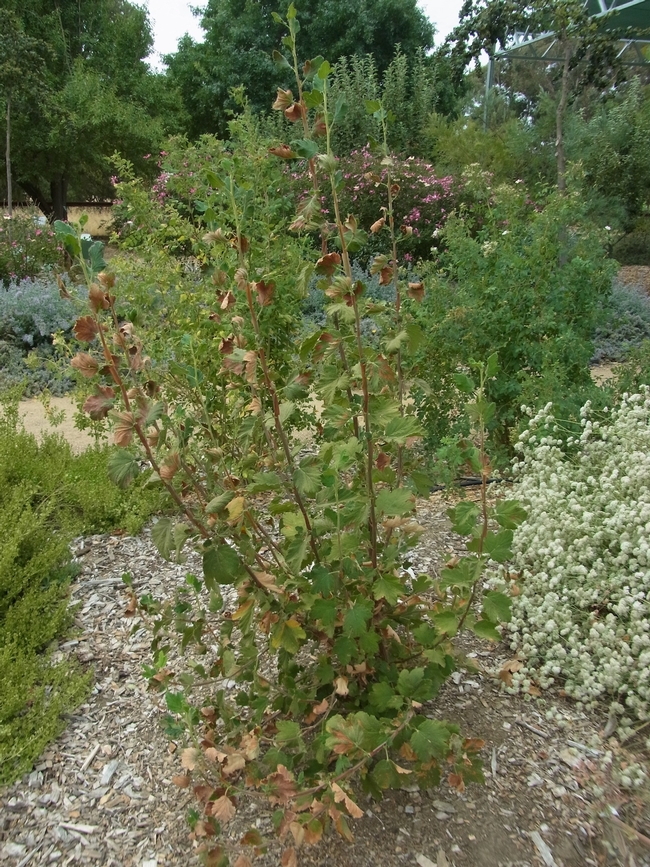 Chaparral currant, Ribes malvaceum is a native plant that is stress-deciduous. We'll let these go dormant to save water for the plants that are still to bloom.
Chaparral currant, Ribes malvaceum is a native plant that is stress-deciduous. We'll let these go dormant to save water for the plants that are still to bloom.
- Provide an efficient water source. The Haven's self-watering container made from a soaker hose runs on a timer. This provides water for our bees while re-using the water for irrigating the plant in the container.
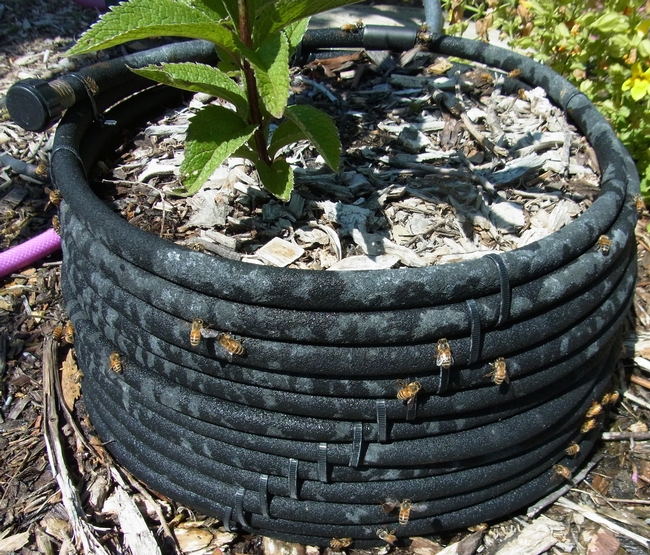 Bee watering container made from a soaker hose
Bee watering container made from a soaker hose
- Plant drought-tolerant bee plants for next year. We have suggestions on the garden's web site.
